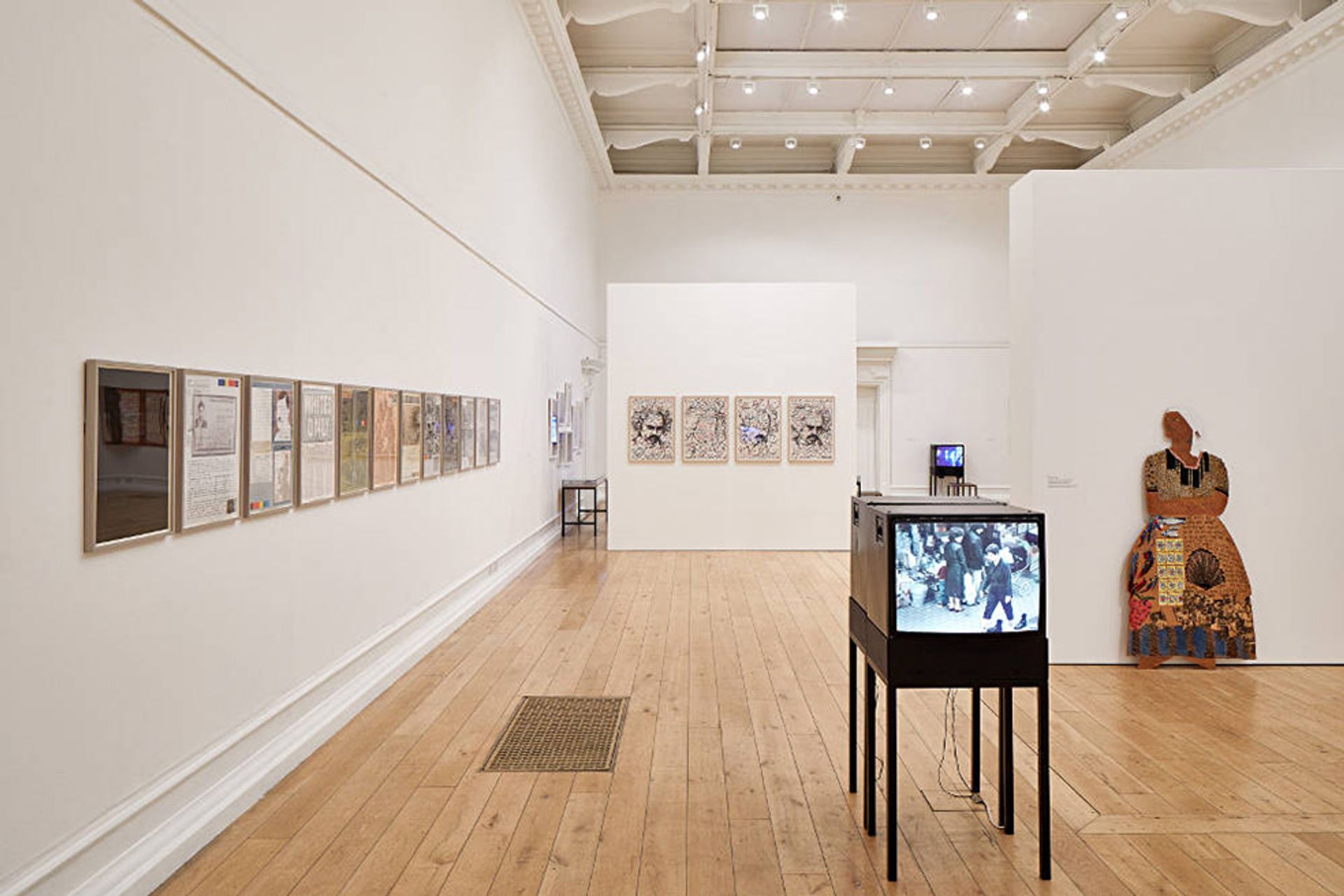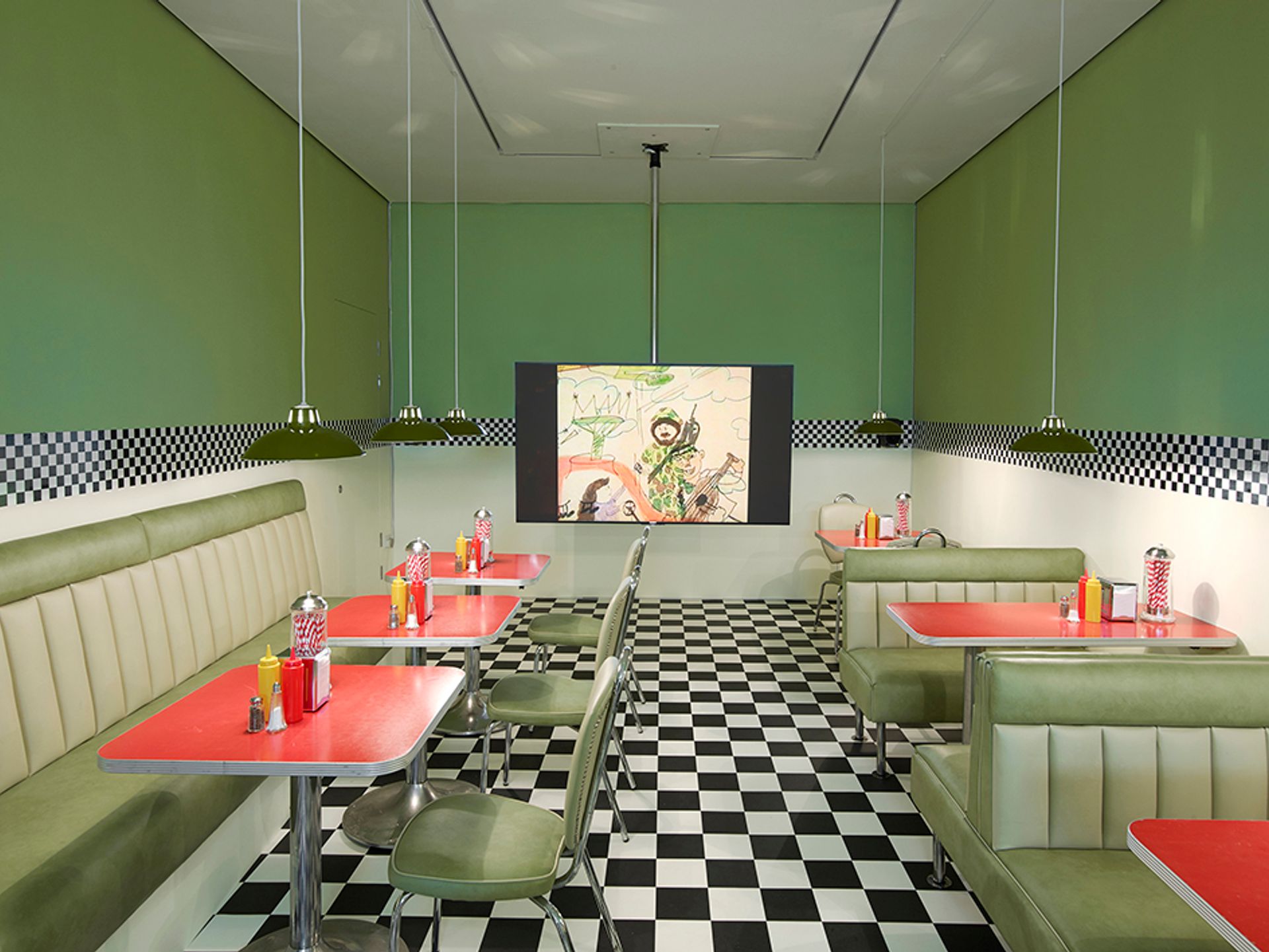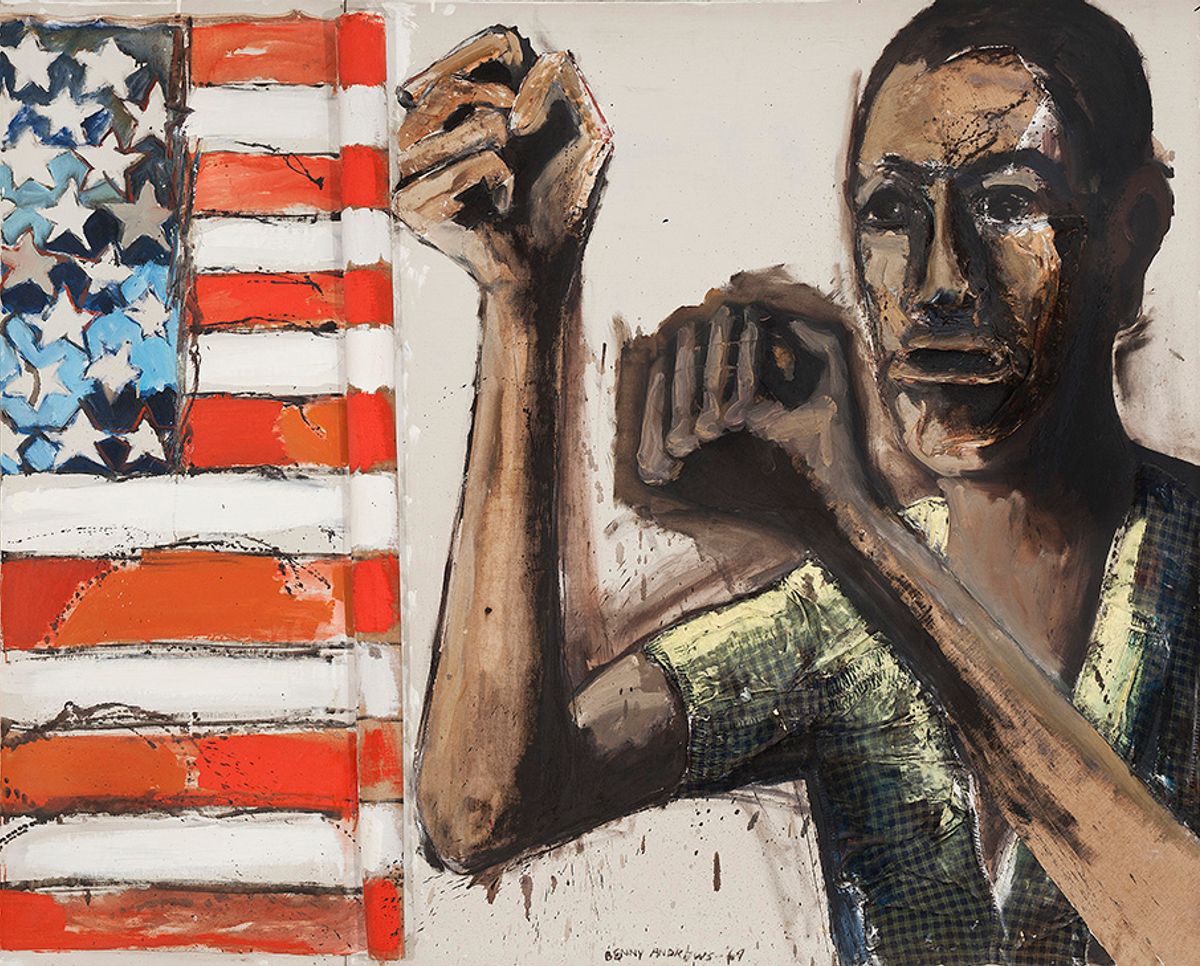Soul of a Nation: Art in the Age of Black Power, Tate Modern (until 22 October)
What a show! Each section and, indeed, pretty much each individual in this rich but rigorous celebration of black artists working in the US in the 1960s and 1970s, could spin off into a separate exhibition in its own right. The various responses to the black civil rights movement and what it meant to be a black artist in this turbulent time range through documentary, polemic, portraiture and abstraction, presenting not only the imagery of protest and identity politics but also an exhilarating revelling in materials in which political struggle goes hand in hand with artistic experiment.
There are terrific examples of works by more familiar names. David Hammons is one of the core artists here, along with the incandescent paintings of Frank Bowling and the ominous welded sculpture of Melvin Edwards. But the real highlight of the show is the plethora of wonderful work by artists barely—if at all—known in the UK. Among the many examples are Sam Gilliam’s enormous washy abstract in reds and purples, created to commemorate the first anniversary of Martin Luther King’s assassination, which seeps regal purple and bloody crimson; the ritualistic, recycled and reassembled work of the Los Angeles artists Noah Purifoy and Betye Saar; or Senga Nengudi’s 1970s sculptures created from stretched nylon tights. Also impossible to ignore are Barkley Hendricks’s powerful—and, in the case of his 1977 Brilliantly Endowed (Self Portrait), audacious—figurative paintings. At a time when Norman Lewis’s ominous America the Beautiful (1960)—in which flaring abstract forms evoke a KKK rally—is still tragically pertinent to the state of the nation, this timely, albeit overdue, exhibition is essential viewing.

Andy Stagg, 2017
The Place is Here, South London Gallery (until 10 September), Middlesbrough Institute of Modern Art (until 8 October)
I missed this exhibition of black and diaspora artists working in the 1980s in the UK when it first opened in Nottingham and now, having seen its South London Gallery incarnation, I am determined see the other concurrent strand at Middlesbrough Institute of Modern Art. It makes for a particularly rich companion to Tate Modern’s Soul of a Nation, for at the same time as their US contemporaries were making art in response to the civil rights movement, we see here how a new generation of British practitioners were also reacting to developments across the Atlantic, while at the same time positioning themselves against a backdrop of British civil unrest and divisive Thatcherite politics.
The show gets its title from a poem written across a cut-out plywood sculpture by the current Turner nominee Lubaina Himid of a woman standing with arms crossed and figures from popular culture and history collaged onto her skirt. Among the wealth of works of art and archive material, there is also a mixed-media self-portrait by the late Donald Rodney incorporating x-ray images of his own body and tracing a bleak lineage back to “75 million dead black souls”; while in Rasheed Araeen’s Ethnic Drawings (1982), four images of the artist’s own face are covered in writings in English and Urdu—including the children’s nursery rhyme Baa Baa Black Sheep.
Black gay desire is harnessed to the Harlem Renaissance in Isaac Julien’s vintage-style silver gelatin photographs, which are accompanied by a poster for his 1989 film, Looking for Langston. In very different ways gender and identity also occupy a central role in works by Sonia Boyce, Claudette Johnson and Joy Gregory. It is a treat, too, to see the video documenting Mona Hatoum’s classic 1985 performance piece Roadworks, in which she walked barefoot though the recently riot-torn streets of Brixton, being trailed by a pair of Dr Marten boots tied by their laces to her ankles. It may be set against the social and political upheavals of the 1980s but, in today’s climate, The Place is Here feels utterly relevant and contemporary.

Co-commissioned by Gasworks and the Sursock Museum; Courtesy of the artist; Photo: Andy Keate
Monira Al Qadiri: the Craft, Gasworks (until 10 September)
It is something of a shock to enter a south London not-for-profit to discover that it has been meticulously transformed into an authentic American diner. Matters become still more discombobulating when, in a video playing amidst the red vinyl seating and formica tables, this same diner appears as the interior of an alien space ship. Diners as spaceships, aliens disguised as Iraqi soldiers and a darkened room occupied by a mysteriously hovering hamburger are just some of the parallel universes conjured out of Al Qadiri’s childhood spent in 1990s Kuwait and revisited here two decades later.
As Al Qadiri recounts the fantasies elaborated by her and her sister in the shadow of the Gulf War and its aftermath, she subsumes us in a world where reality is destabilised and trust eroded. Along with the futuristic 1960s architecture of the Gulf—which is described in a robotic voiceover that reverberates out of the darkness around the floating burger—the consumer capitalism and Americana that seemed to have mid-20th-century Kuwait and its surrounding states in its grip is presented as increasingly alien. In this bizarre but unexpectedly effective shakeup of time and inner and outer space, the political is rendered touchingly and idiosyncratically personal.



